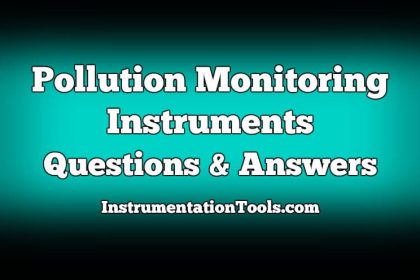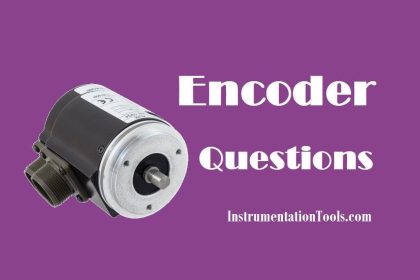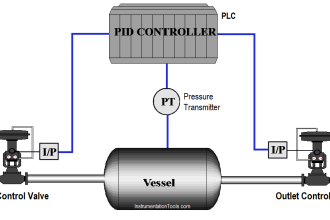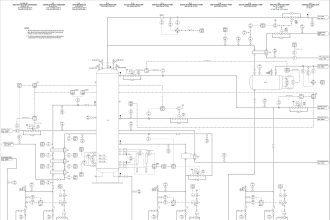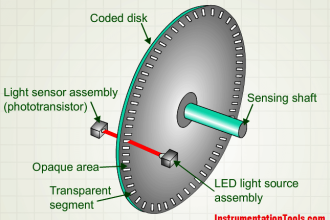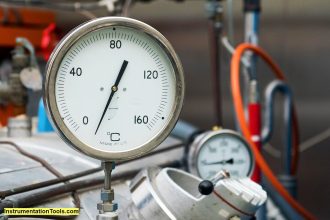Paramagnetic Oxygen Analyzers Questions & Answers
1. Which among the following gases have diamagnetic property (ability to be repelled by magnetic fields)?
a) Oxygen
b) Nitrogen
c) Nitrogen dioxide
d) Nitric oxide
Answer: b
Explanation: Nitrogen has diamagnetic property. Other components that have diamagnetic property are carbon, boron, etc.
2. Which of the following gases have paramagnetic property (ability to get attracted to the magnetic field)?
a) Nitric oxide
b) Hydrogen
c) Helium
d) Nitrogen
Answer: a
Explanation: Nitric oxide has paramagnetic property. Nitrogen dioxide and oxygen are other gases that have paramagnetic property.
3. The force produced during operation of Paramagnetic oxygen analyzer is proportional to which of the following?
a) Magnetic susceptibility of sphere
b) Magnetic susceptibility of surrounding gas
c) Difference between magnetic susceptibility of sphere and magnetic field strength
d) Difference between magnetic susceptibility of sphere and that of surrounding gas
Answer: d
Explanation: The paramagnetic property of oxygen is used in this method for the analysis of oxygen. The force produced during operation of Paramagnetic oxygen analyzer is proportional to the difference between magnetic susceptibility of the sphere and that of surrounding gas.
4. In Paramagnetic oxygen analyzer, the expression for the magnitude of force produced can be expressed as, F = C (K-KO), where K= magnetic susceptibility of surrounding gas and KO= magnetic susceptibility of the sphere. C denotes which of the following?
a) Magnetic field strength
b) Magnetic gradient
c) Function of magnetic field strength and gradient
d) Magnetic flux
Answer: c
Explanation: In the expression for magnitude of force, C denotes the function of magnetic field strength and gradient. The forces are thus a measure of magnetic susceptibility and hence of oxygen.
5. In Paramagnetic oxygen analyzer, the electrostatic force that is exerted should have which of the following features?
a) It should be greater than the magnetic field and must be in the same direction
b) It should be equal to the magnetic field and must be in the same direction
c) It should be greater than the magnetic field and must be in the opposite direction
d) It should be equal to the magnetic field and must be in the opposite direction
Answer: d
Explanation: The electrostatic force that is exerted should be equal to the magnetic field and must be in the opposite direction. It is exerted by two charged vanes.
6. Which of the following is true about the two charged vanes that produce an electric field in Paramagnetic oxygen analyzer?
a) Both the vanes should be at higher potential than the test body
b) Both the vanes should have the same potential as the test body
c) One vane should be at higher potential than the test body and the other vane should be at lower potential
d) Both the vanes should be at lower potential than the test body
Answer: c
Explanation: In Paramagnetic oxygen analyzer, the two charged vanes should be such that one vane should be at higher potential than the test body and the other vane should be at lower potential. This electric field produces a force.
7. In Paramagnetic oxygen analyzer, when no oxygen is present the magnetic force balances torque of the fiber.
a) True
b) False
Answer: a
Explanation: In Paramagnetic oxygen analyzer, when no oxygen is present the magnetic force balances torque of the fibre. If oxygen is present, it would displace the dumb-bell sphere.
8. To improve paramagnetic oxygen analyzer, the quartz suspension must be replaced with which of the following?
a) Platinum-iridium
b) Phosphor-bronze
c) Gold-palladium
d) Antimony
Answer: a
Explanation: To improve paramagnetic oxygen analyzer, the quartz suspension must be replaced with Platinum-iridium. It is more robust.
9. In the Beckman instrument, the flow rate recommended when the sample enters through a porous diffusion disc is which of the following?
a) 100-200 cc/min
b) 50-250 cc/min
c) 40-60 cc/min
d) 200-300 cc/min
Answer: b
Explanation: In the Beckman instrument, the flow rate recommended when the sample enters through a porous diffusion disc is 50-250 cc/min. paramagnetic oxygen analyzer was first described by Pauling.
10. In the Beckman instrument, the flow rate recommended when the sample enters directly for rapid response is which of the following?
a) 100-200 cc/min
b) 50-250 cc/min
c) 40-60 cc/min
d) 200-300 cc/min
Answer: c
Explanation: In the Beckman instrument, the flow rate recommended when the sample enters directly for rapid response is 40-60 cc/min. paramagnetic oxygen analyzer was first described by Pauling.
11. Which of the following happens to the magnetic susceptibility of gases when the temperature changes?
a) It increases with increase in temperature
b) It decreases with increase in temperature
c) It remains constant with increase in temperature
d) It remains constant with decrease in temperature
Answer: b
Explanation: Magnetic susceptibility of gases decreases with increase in temperature. Magnetic susceptibility of oxygen decreases with increase in temperature.
12. If the oxygen content is not greater than 21%, which of the following gases must be used to set the span point?
a) Oxygen
b) Dry air
c) Nitrogen
d) Hydrogen
Answer: b
Explanation: If the oxygen content is not greater than 21%, dry air is used to set the span point. This is done for calibration purposes.
13. If the oxygen content is greater than 21%, which of the following gases must be used to set the span point?
a) Oxygen
b) Dry air
c) Nitrogen
d) Hydrogen
Answer: a
Explanation: If the oxygen content is greater than 21%, oxygen is used to set the span point. This is done for calibration purposes.

